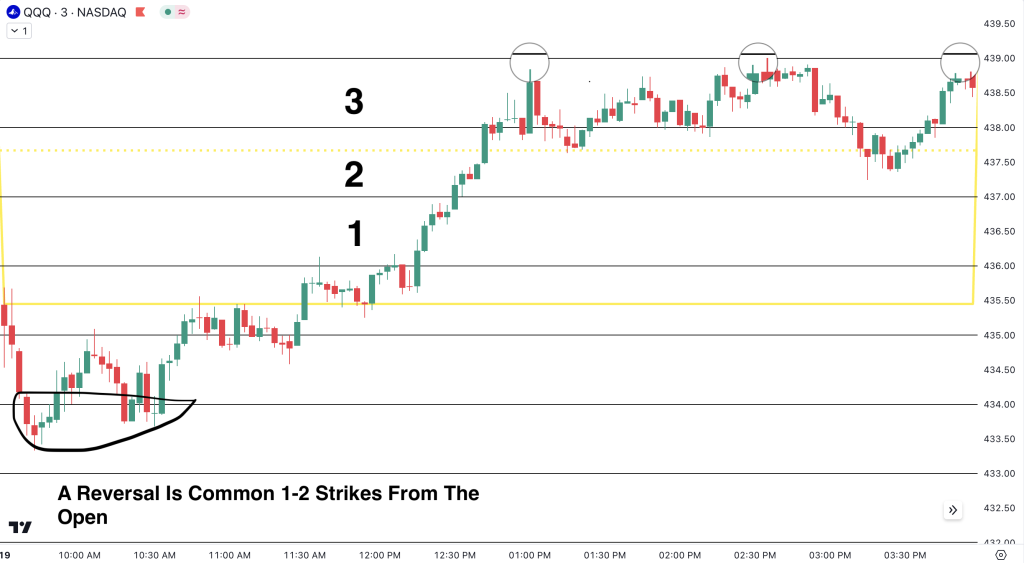May 7, 2024
SPY/QQQ’s Price Action Follows The Strike Rule.
The strike rule varies depending on the ETF’s volume. For all my examples, I’ll use QQQ, but these rules also apply to SPY.
- Hard Mode: If QQQ volume is below 95%, the average maximum move is 1-2 strikes. Avoid entering trades if the price has moved more than 2 strikes. Trade with a very small-sized position.
- Normal Mode: If QQQ volume is between 95% and 120%, the average maximum move is 3 strikes. Only chase the price up to 2 strikes. Trade with a decent-sized position.
- High Mode: If QQQ volume is above 120%, the average maximum move is beyond 3 strikes. Follow the price action (Bulls above OP, Bears below OP), and cut losses quickly. If a trade isn’t moving in your direction, switch positions; in high mode, you can still achieve 100%+ gains.
When QQQ is 3 strikes higher or lower from the OP, a reversal is more likely. Use caution when attempting to reverse the price on high-volume trend days. Avoid stepping in front of the metaphorical train. On these days, if the price action is moving strongly in one direction, do not attempt to reverse it, as it is very risky.
When price reaches a strike level, three things can happen:

- Price blows through, and the movement continues.
- Price reverse off the strike.
- Price chops at the strike.
Once you’re aware of this, your trading will improve significantly. Wait for strike interaction to see which way the price will move. In the entering/exiting trades section, we provide more detailed information on strike knowledge.

03/19/24 Case Study:
The price moves close to 2 strikes down from the OP, then reverses and reaches the $439 strike multiple times without exceeding it. The price remains stagnant, chopping between $438 and $439 until the end of the day (EOD).